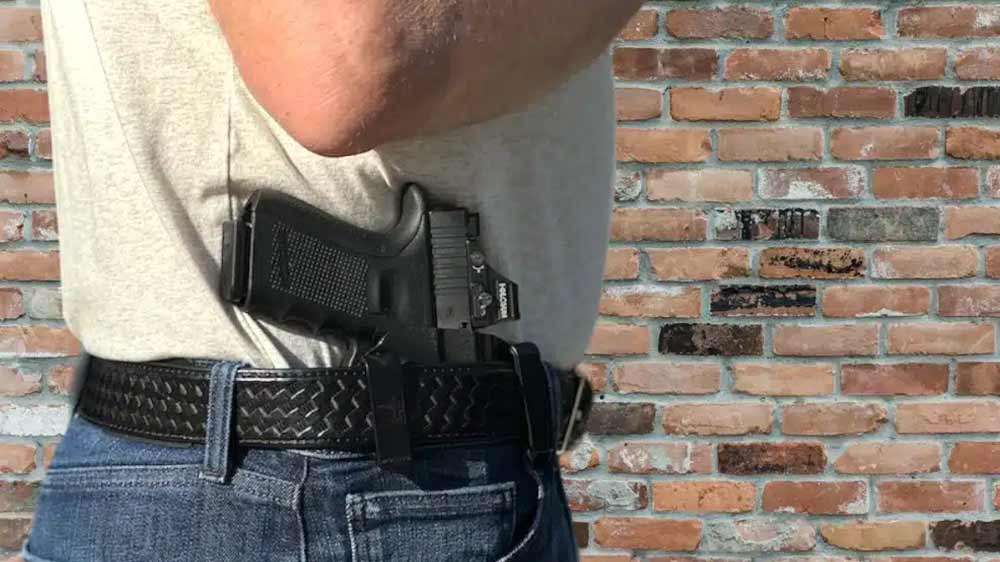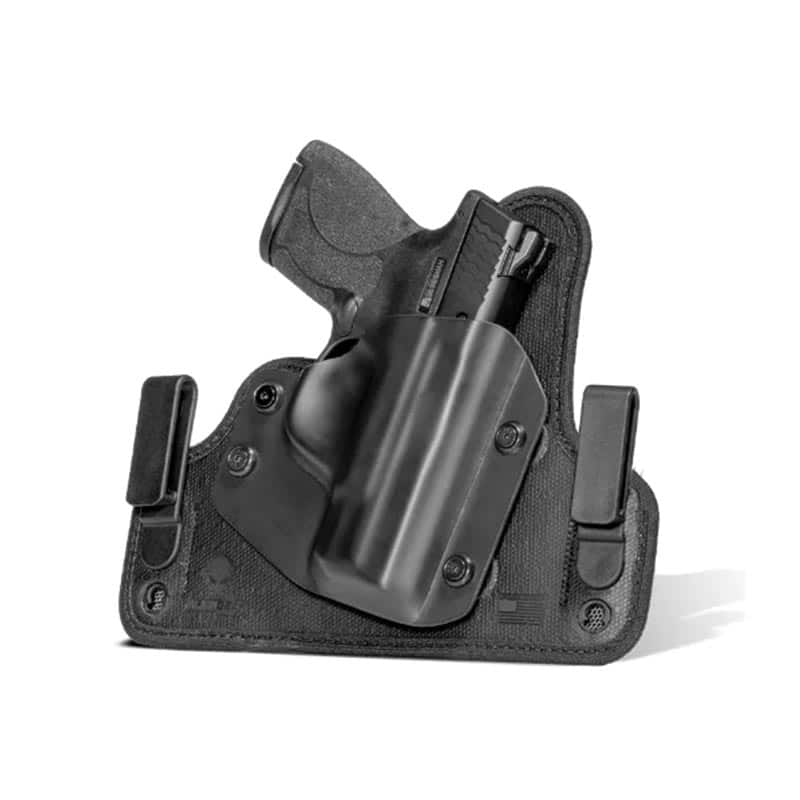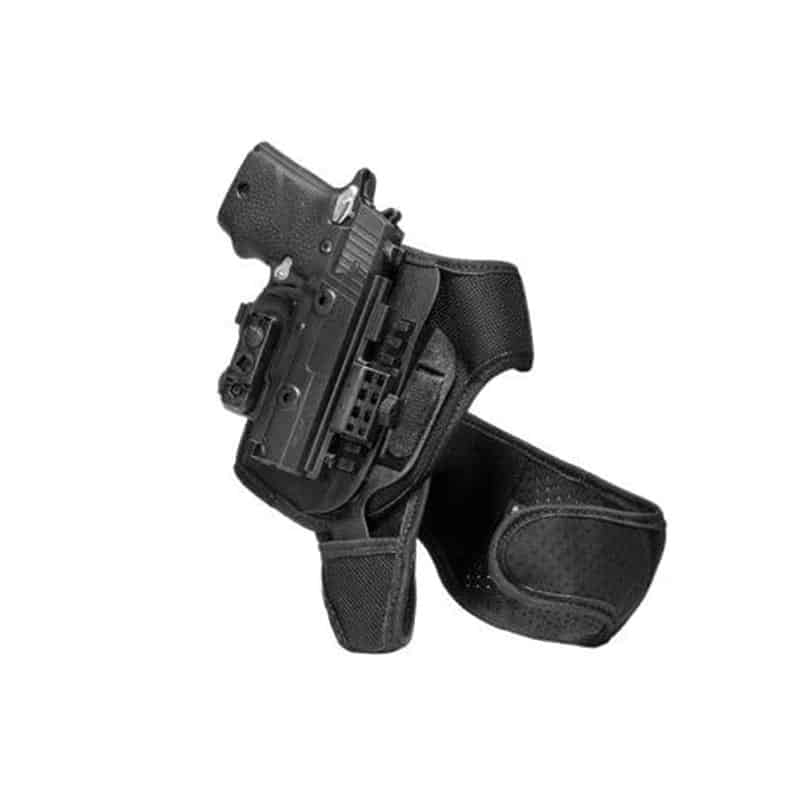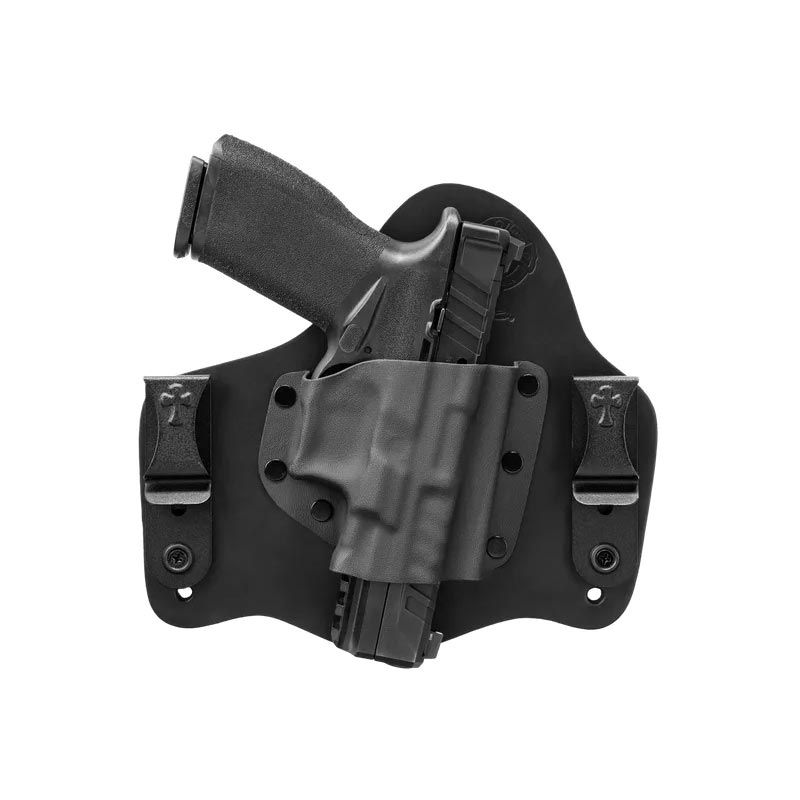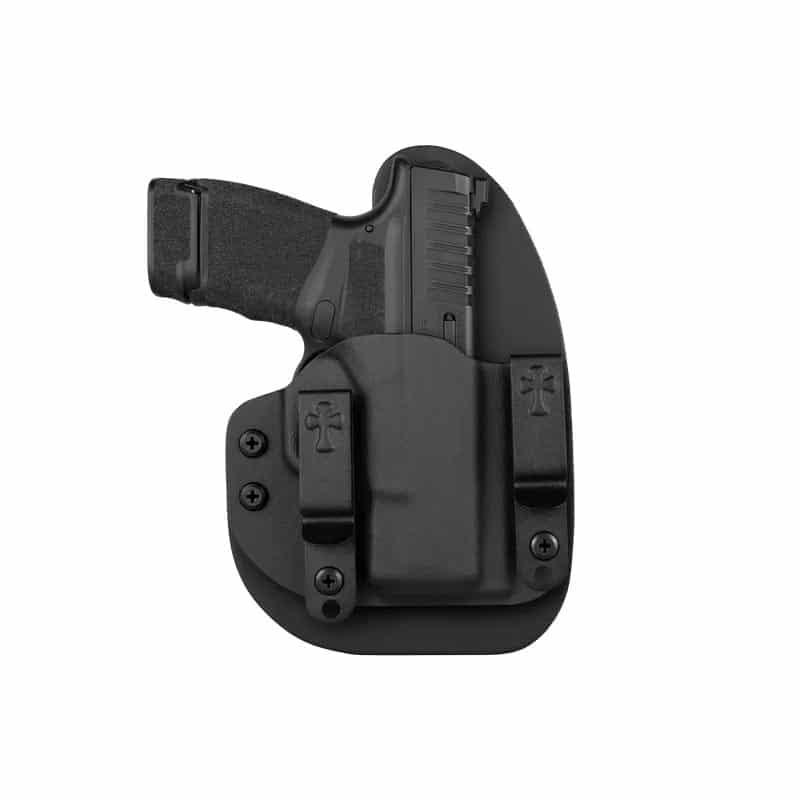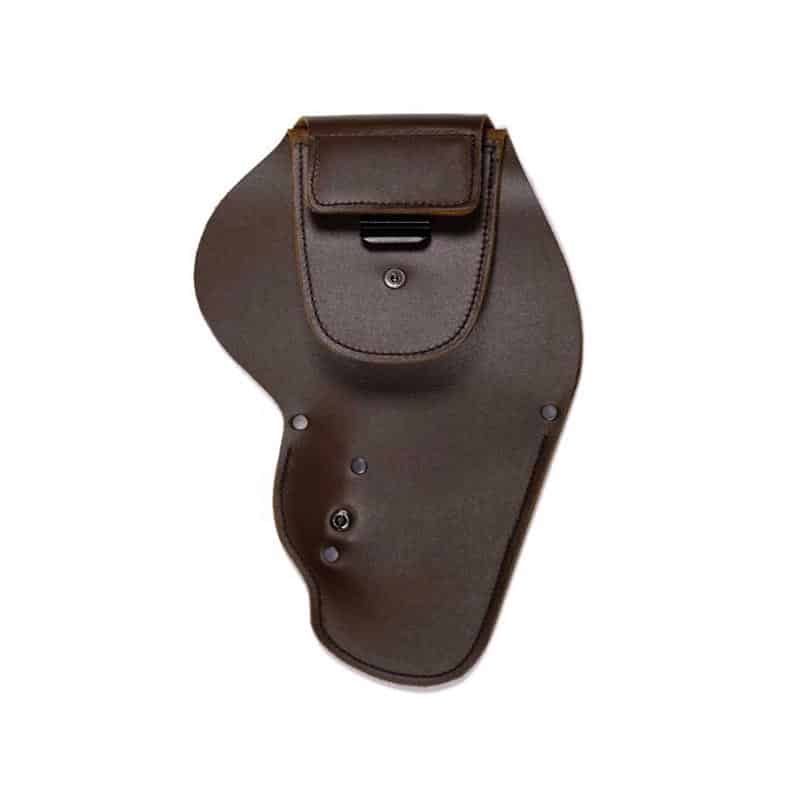What is a Holster?
A holster is a device used to hold or restrict the undesired movement of a handgun, most commonly in a location where it can be easily withdrawn for immediate use. Holsters are often attached to a belt or waistband, but they can also be attached to other parts of the body (like ankle holsters, shoulder holsters, or inside-the-waistband holsters). They are designed to offer protection to the handgun, secure its retention, and provide ready access to it. The right holster for an individual depends on the specific needs, including the type of handgun, the circumstances under which it will be carried, personal comfort, and how quickly the handgun needs to be accessed.
Understanding a Holster’s Function
There are three primary functions of a holster:
Retention: A good holster should securely hold your gun even when you’re moving around or in awkward positions.
Protection: It shields the gun from the elements and safeguards the trigger to prevent unintentional discharges.
Accessibility: It enables you to quickly and easily draw your firearm when necessary.
7 Key Factors to Consider When Deciding on a Type of Holster
Fit
The holster should be appropriately tailored to your particular pistol model. A good fit improves retention and safeguards the weapon.
Comfort
Consistent carrying is encouraged by a comfortable holster. To find what works for you, experiment with various carry postures and holster materials.
Concealability
Some holsters camouflage better than others depending on your body type and clothing preferences. The holster should adequately hide the weapon without printing.
Quality and Material
Two common materials for holsters are leather and Kydex. Kydex provides excellent comfort and retention; leather is more comfortable but takes longer to break in.
Draw Speed
You must be able to quickly remove your gun from your holster. You can find out which holster provides the quickest draw by practicing (with an unloaded handgun).
Safety
To prevent unintentional discharges, the trigger guard should be entirely covered by the holster. In order to keep the pistol from falling out, it should be held tightly.
Avoiding Printing with Your Holster
One thing you want to avoid when concealed carrying is the printing of your firearm. “Printing” refers to the visible outline of your firearm through your clothing, which can occur if your holster or firearm doesn’t conceal well. To keep the element of surprise in a defensive situation and to prevent alarming anyone nearby, concealed carry entails making sure your firearm is undetectable. Moreover, in certain jurisdictions, printing could potentially lead to legal consequences.
Types of Holsters for Concealed Carry
Diving into the wide-ranging realm of options for carrying firearms, you gotta grasp the assortment of holsters out there. They’re crafted to cater to specific needs and tastes, tailored for different scenarios faced by gun owners.
Outside-the-Waistband (OWB) Holsters:
These are worn on the outside of the waistband and are one of the most common holster types. They provide easy access to the firearm but are more difficult to conceal without the right clothing.
Inside-the-Waistband (IWB) Holsters:
IWB holsters are designed to fit inside the wearer’s waistband, offering better concealment compared to OWB holsters. They are a popular choice for concealed carry.
Shoulder Holsters:
These are harnesses worn around the shoulders, positioning the gun under the arm. They are good for concealment under jackets or coats and are often used by those who are seated or driving for long periods.
Ankle Holsters:
Ankle holsters wrap around the lower leg and are designed for small firearms. They offer deep concealment but are less accessible than other types of holsters.
Pocket Holsters:
Designed for small handguns, pocket holsters fit inside a pocket, helping to mask the shape of the gun and keep it in the correct position for drawing.
Appendix Carry Holsters:
A form of IWB holster that positions the firearm in front of the body, near the appendix. This style is favored for its accessibility and concealability.
Concealed Carry Clothing:
Special clothing items, like vests, jackets, and even underwear, with built-in holsters. These offer alternative concealment options for carrying a firearm. When choosing a holster, consider factors like the material (leather, nylon, Kydex), retention (how well the holster holds the firearm), comfort, concealability, and ease of draw. A properly chosen holster is a critical component of responsible firearm carrying, ensuring the gun is secure, concealed (if necessary), and accessible.
Conclusion
Picking out a holster is not one-size-fits-all. Like fingerprints, each choice is unique to the person making it – as varied and individual as those who tote guns around. Whether your priority is accessibility, concealment, comfort, or a blend of these factors, there’s a holster type designed to meet your needs. From the traditional OWB and IWB holsters that cater to quick access and discretion, to the specialized options like shoulder, ankle, and appendix carry holsters, each type offers unique advantages.
Moreover, the creative styles of covert carry apparel offer another option for those who want to smoothly incorporate their firearm into their everyday outfit. You gotta think about how you live your life, what the gun laws are where you hang out, and the kind of piece you’re packing when it comes to picking the perfect holster. Choosing the right holster is all about making sure your gun is safe, easy to get to, and secure – it’s a big part of being a responsible gun owner. But keep in mind, most gun owners do not just own one holster. They are more likely than not to own a variety of holsters to meet any need they may have to successfully conceal in any ocassion.

